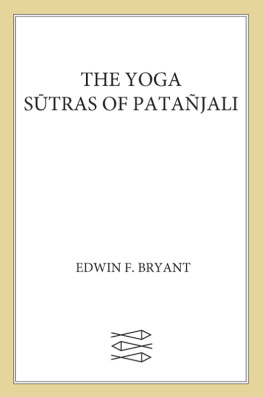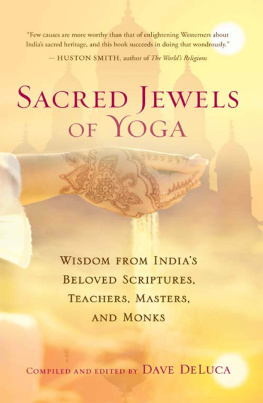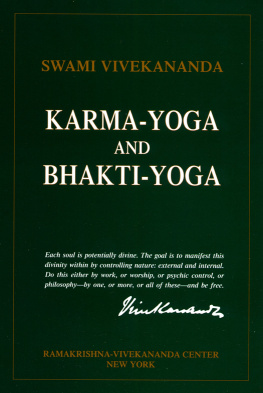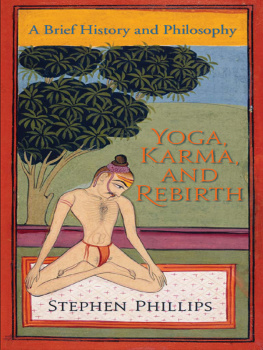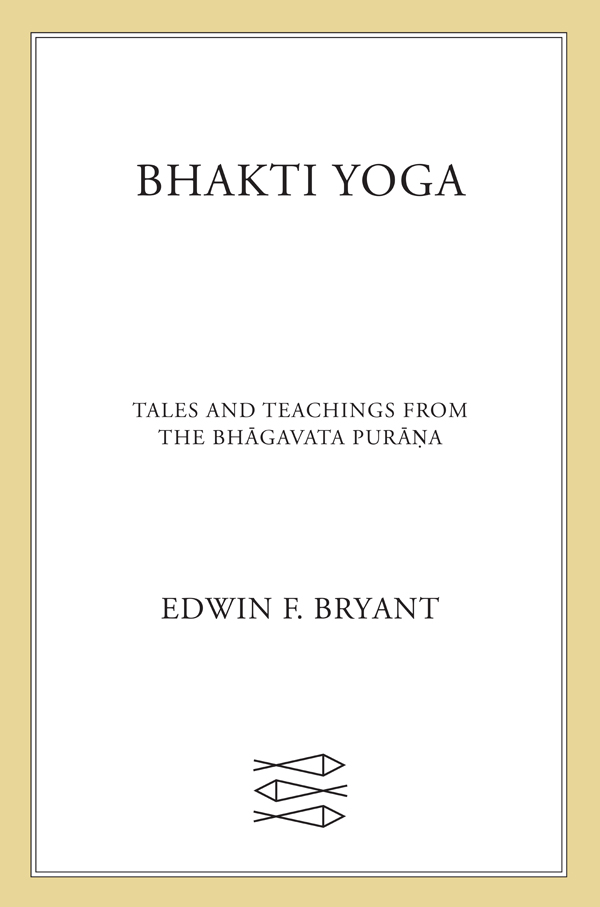Contents
Guide

The author and publisher have provided this e-book to you for your personal use only. You may not make this e-book publicly available in any way. Copyright infringement is against the law. If you believe the copy of this e-book you are reading infringes on the authors copyright, please notify the publisher at: us.macmillanusa.com/piracy.
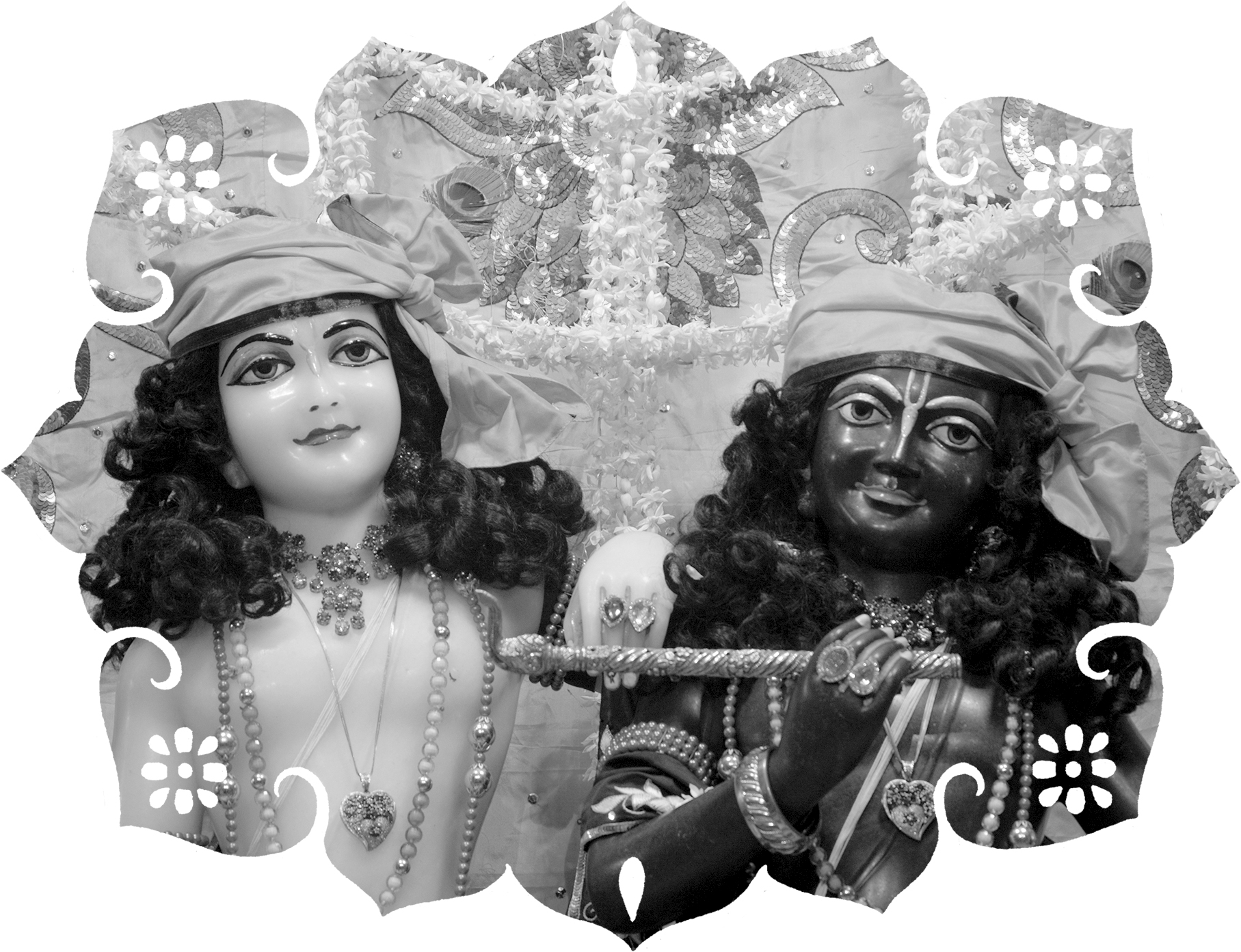
r r Ka-Balarmbhy nama
In honor and dear remembrance of my father, George Bryant, MBE, for exemplifying dharma long before I encountered the concept in Sanskrit texts. I spent much time in his company as I worked on this text. May he partake of any merit accruing from this work.
To my daughter, Mohin, in case one day she ever wonders what this piece of her upbringing was really all about.
To my sister, Pia, for all her love and support, that she may gain a clearer understanding of bhakti yoga . To Hannah Jackson, in case she ever becomes interested. And to all seekers interested in knowing more about the spirituality associated with the mischievous, lotus-eyed blue boy.
To my teachers and to all the bhgavatas who have recorded, preserved, transmitted, and taught the wonderful lls of Bhagavn across the ages. May they accept this little attempt to follow in their footsteps and smile with kindness and good humor at all its imperfections.
And, finally, to Jeff Seroy and the folks at Farrar, Straus and Giroux, for having faith in this project and being a great team to work with.
There are as many variegated expressions of bhakti yoga in India as there are sects, languages, communities, lineages, castes, regions, villages, and, indeed, human hearts wherein it ultimately resides. This book is focused on one expression of bhakti : Vaiava bhakti centered on r Ka as emerges in a sixteenth-century tradition. In this section, we discuss our vision and method for the volume and provide some rationale and contextual background for the texts on bhakti that we have chosen to feature. Our discussion in this introductory section may be mildly academic, but we have made every effort in the remainder of the volume to avoid scholarly language and specialized jargon in preference for straightforward prose and concepts accessible for the educated but nonspecialized reader. In this work, we attempt to navigate that unattainable line between producing something that is academically respectable, accessible to the interested nonspecialist, and useful to the intellectually responsible yoga practitioner. Since this is an impossible feat, I can only beg the indulgence both of scholars, who may find some of the discussion overly simplistic, and of lay readers, whether personally involved with yoga practices or not, who may find it too academic in places. In any event, anyone not interested in this sections technicalities might prefer to proceed to the next section, Definition of Bhakti , where we begin our actual discussion on bhakti proper.
Specifically, the tales and teachings in part 2 of this volume are translations from the rmad Bhgavata Pura , the Beautiful Legend of Bhagavn [God] (henceforth Bhgavata ), as are the stories of Ka in part 3. After much deliberation, we have chosen the translation legend here for the Sanskrit term pura , We will introduce these sources below. While we will engage a wide variety of other intellectual and theological expressions in India both prior and contemporary to the sixteenth century, our motive will be to compare and contrast these with our chosen case study.
Our aim in this volume is to provide the reader with a modest window into how bhakti is understood through the frame of reference of one community of practitioners in the premodern period. Our interest in this book is in the theology of Ka bhakti the beliefs, metaphysics, devotional attitudes, and, most especially, yogic practices of this traditionconsidered through the traditions own categories and terminologies as presented by its adherents. context, moka , the liberated state). This is a book intended for anyone with intellectual inclinations interested in exploring an expression of bhakti as a lived realityas a map of how to navigate ones existence in this world, frame its ultimate meaning, and conceive of that which lies beyond.
For my academic colleagues, I feel obliged to point out that this is not an analysis of the social, political, or ideological contexts of Ka bhakti , nor of the material influences that fed into its historical developmentconcerns that have come to dominate and, in fact, more or less define the study of religion as an academic discipline.
We thus prioritize premodern traditional sources in this volume (but we have included references to select academic studies in notes). Our hope is that this focus affords an opportunity to glimpse one facet of the traditional Hindu universe of bhakti in India as expressed in a very important classical text and a major commentarial tradition prior to its encounter with modernity in the colonial period. Our aim is for scholars and students of religion to gain some understanding of the worldview and principal beliefs of the Ka bhakta practitioner of this tradition, and for intellectually responsible yoga practitioners to get a better sense of the premodern rationale of a form of bhakti as a very specific type of yoga practice. As a result of our chosen focus, in addition to engaging an important bhakti text, by an exposure to a traditional mode of understanding, interpreting, and reworking sacred scripture (hermeneutics), via Jva and Rpas commentarial writings and interpretations of the Bhgavata , we will explore how an elaborate and sophisticated bhakti tradition sets about gaining authenticity for its teachings. Foundational texts such as the Bhgavata in ancient India are almost always studied through the lineage-based commentaries that are written to clarify them, as well as to establish a sects theological credentials.
Our contention is that there is much that is shared, in both form and experience, in the overlapping but distinct traditions of bhakti , and that revealing the worldview and ingredients of one tradition in some depth provides a basic template that can readily be refitted and applied to other expressions, despite important differences. If we analogize Hinduism as a universe containing numerous distinct but also significantly overlapping and interacting galaxies, with specific devotional traditions analogous to constellations, then awareness of the constitution and orbits of one constellation provides invaluable information relevant to other constellations, despite important differences. There is thus merit in exploring one bhakti universe with some profundity, rather than superficially attempting to cover the entire panoramic multifarious breadth of the vast spectrum of Hindu devotional traditions. Exposure to the metaphysical infrastructure, theological vision, set of practices, mental cultivations, and devotional depths of one tradition provides a useful blueprint that can be readily compared with others.
A further comment here on method: As is obvious from the cover designs, this work was conceived as a follow-up to the authors commentary on the Yoga Stras of Patajali. The rationale for that work, given the massive transplantation to the West of practices that have been assigned the name yoga , was to attempt to provide some grounding of the actual metaphysics, goals, and practices of classical yoga in their most prominent, premodern textual sources. This present project is motivated by similar intentions with regard to grounding bhakti . The difference in this work is that owing to the variegation in the bhakti traditions, we have focused principally on one lineage-specific expression of bhakti . The premodern Patajali-derived Yoga tradition does not present the same heterogeneity as bhakti : there are no distinct lineages that derive from Patajalis Yoga Stras , So we can speak of a fairly consistent Yoga tradition without overly generalizing or essentializing (that is, sharing the same Skhya metaphysics, understanding of mind and of consciousness, set of practices, and the like).


